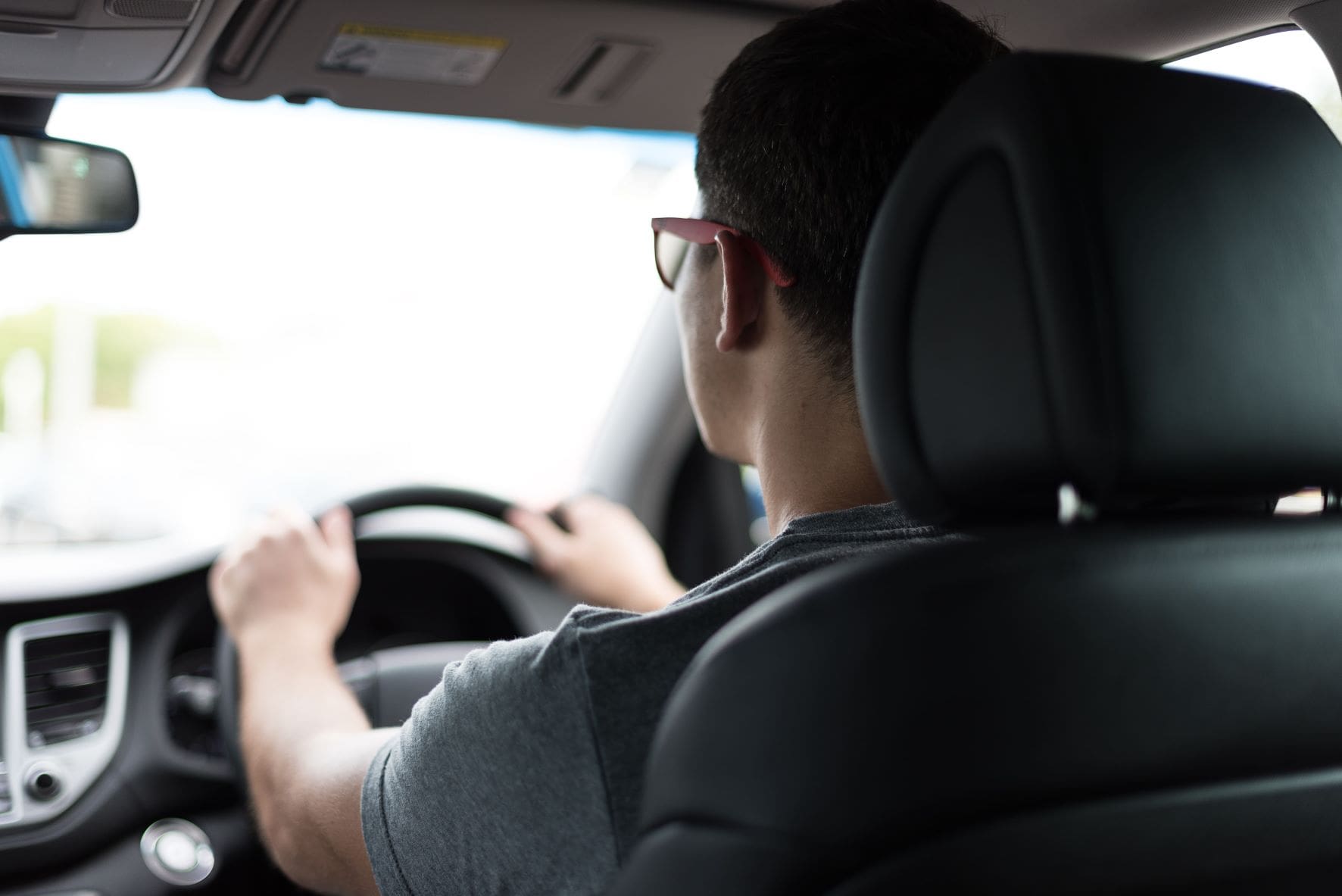There are plenty of ways to prepare yourself and your car for a successful long distance drive. Whether you're heading off on a road trip or commuting for work, staying alert is the most important thing.
If you need help preparing for a long journey, you're in the right place. Here are 12 long distance driving tips to keep you safe and comfortable on the road.
Page Contents
- Plan Your Route in Advance
- Sleep Well the Night(s) Before
- Take Regular Breaks
- Share the Workload
- Make Sure Your Car is in Good Condition Before Driving
- Pack an Emergency Kit
- Stay Hydrated
- Set Your Car Up Correctly for Long Distances
- Keep the Car Well Ventilated
- Make Sure You're Driving in Comfortable Clothes and Shoes
- Don't Rely on Cruise Control
- Create a Sweet Long Distance Driving Playlist
Plan Your Route in Advance
Humans are creatures of habit. Most of us work better when we have a set routine and know what we're supposed to be doing and when we're going to be doing it.
Long distance driving is no different.
While you'll probably use a satnav while on the road, it always helps to look at the route beforehand to make sure you know where you're going. It can also help you plan rest stops along the way to keep you fresh and alert. You can also plan an exciting detour or two to shake up the scenery.
Sleep Well the Night(s) Before
You never want to start a long journey without being well-rested. That's not just having a great night's sleep before you set off, it's about stringing three or four together in a row.
Make sure you get between 7 and 9 hours of sleep before you set off. Here are a few ways to achieve this if you struggle to sleep:
- Stop looking at your phone screen 30 minutes before you go to sleep. 'Blue light' interferes with your normal sleep pattern and can make it hard for you to drop off. You can also set a 'blue light filter' on most smartphones to come on at a certain time.
- Make sure you feel comfortable going to sleep. If you get too warm, remove layers, open a window or switch on a fan. If you're too cold, add more layers or use a thicker duvet.
- Make sure your room is completely dark to make sure you get to sleep quickly. Either use blackout curtains or a sleep eyepatch to create the perfect sleeping space.
Try to build up a few nights of proper sleep before setting off on your long-distance drive. While the night before is always the most important, avoiding 'sleep debt' puts you in the best position for a safe and successful drive.
Take Regular Breaks
As drivers are most likely to fall asleep at around 6am, it is incredibly important that you factor regular breaks into your journey - particularly if travelling in the early hours. On a long journey, you should stop for about 20 minutes every 2 hours to keep yourself fresh and able to concentrate. You don't want to lose focus while on the road or fall into a 'micro sleep'.
Sure, it might extend your journey time but, if you've planned your route in advance, you can enjoy a beautiful view while you stretch your legs. We also recommend having a snack and a drink during the break as well.
Stopping regularly is the most important tip we can offer. Breaking up the journey is the best way to keep you safe and in control of your car throughout your long distance drive.

Share the Workload
Driving hundreds of miles on your own isn't that fun. If you're travelling with your family or a group of friends, see if others are willing to get behind the wheel for a stint (and insure them accordingly). If you can rest on the journey, you'll feel much fresher for your next stint and when you get to your destination.
If you can't share the workload around, either take more frequent breaks or stop for longer each time.
Make Sure Your Car is in Good Condition Before Driving
A breakdown is the last thing you want on your long distance road trip, especially if a few pre-journey checks would have avoided the problem.
We recommend at least checking the following before every long journey:
- Engine Oil
- Screen Wash
- Tyre Tread & Tyre Pressure
- Windscreen & Mirrors (for any chips or cracks)
- Fuel Level
If you notice any problems, you should get them sorted before you set off.
For complete peace of mind, you should book a car service before travelling to check that your car is safe and roadworthy. It also increases your chances of making it to your destination. Plus, when you compare garages through BookMyGarage you can save up to 70% on your car service when you choose one of the lower-cost options. So it's a win-win really.
Book online today!
If you drive long distances regularly, we recommend booking a car service more often. An interim service is a great way to ensure the most essential parts of your car work properly at all times, keeping you and other road users safe.
Pack an Emergency Kit
Something can go wrong on a long distance journey even if you look after your car properly. That's why it's best to be prepared and pack an emergency kit before you hit the road. Some things that you should you keep in your car at all times include:
- High-vis jacket
- Phone charger
- Snacks
- First Aid Kit
- Torch & Spare Batteries
- Blanket
- Spare Bulbs
You can also tailor your car's emergency kit for your needs as well as having season-specific items (i.e extra layers during winter).
Stay Hydrated
Caffeine and sugary drinks are great. It could be tempting to drink a lot of tea or coffee to keep you going or reach for a fizzy drink while on the road.
However, you shouldn't rely on them during a long distance drive. Too much caffeine can make you sleepy and drinking too many sugary drinks is bad advice in general. That's why you should make sure you have a water bottle handy and take on fluids regularly.
It's very easy to become dehydrated in a stuffy car without realising it. And that feeling is the same as being over the drink drive limit. This can make you twice as likely to make a mistake.
Set Your Car Up Correctly for Long Distances
Sitting behind the wheel of a car all day isn't exactly comfortable, but you can avoid a few problems by setting up your driving position properly.
Adjust Your Seat's Back Angle or Distance From the Pedals
You should be able to push the clutch pedal all the way to the floor without having to stretch. If you feel that your leg is overextending to reach the pedal, move your seat closer. There should be a small lever underneath that adjusts the position.
You also want to sit flat against the backrest. If your seat is at too much of an angle, find the dial on the side of the chair and turn it until you can sit comfortably and rest against the seat back. Make sure you don't have to slump, stretch or bend to do so.
Bring the Steering Wheel Closer
Your arms should remain in a neutral position at all times while driving. If you have to stretch uncomfortably to reach the steering wheel, you should move it closer to you. Consult your vehicle handbook to find out how and put it in a more comfortable position.
You should also reposition your mirrors and satnav so that you don't have to bend or twist to use them. As well as this, take the time to ensure your hips are at the same height as your knees and the head restraint is level with the top of your head. This will give you the most comfortable driving position and make sure you don't injure yourself while driving.

Keep the Car Well Ventilated
Fresh air helps to keep you alert. While you shouldn't rely on a stiff breeze to keep you awake, opening a window can help you avoid drowsiness. It also makes sure the air inside the car doesn't get too stale.
Obviously, if you're driving on a hot day, you're going to want to use the air conditioning if your car has it. There's nothing wrong with this, but you should still consider opening a window for, say, 5 minutes out of every hour.
Make Sure You're Driving in Comfortable Clothes and Shoes
If you're going to be behind the wheel for several hours, you don't want to feel uncomfortable or trapped in the seat. Wear loose clothing instead of skinny jeans and make sure you have comfy, flat shoes on. If you think you might get cold, have layers handy to put on during a rest stop but avoid wearing jumpers or thick coats. You might overheat quickly and get uncomfortable.
If you set your seat up properly as well, you should have a smooth journey from start to finish.
Don't Rely on Cruise Control
Cruise control is great. But while it can improve your fuel economy and make your life easier, you shouldn't rely on it during your long journey. It lowers your concentration levels, making you more susceptible to an accident if the road suddenly changes.
Don't be afraid to switch your cruise control off and take manual control for some stages of the journey to keep yourself focused. (Obviously, if your car doesn't have this luxury, you don't need to worry!)
Create a Sweet Long Distance Driving Playlist
Listening to the radio is great but, let's face it, there will come a time on a long distance drive when you hear the same song twice. Take control of the music by creating your personal driving playlist so the tunes just keep on coming. If you're on a road trip with friends, most music streaming services allow you to create group sessions so all your passengers have a say in the song choices - for better or worse...







